#Story development
Explore tagged Tumblr posts
Text
The Art of Character Growth
Learning is a continuous journey. We aren't the same person we were yesterday. Each day, we grow from new experiences and lessons.
**Character Development:**
In your writing, ensure characters grow and learn. Stagnant characters can lose readers’ interest. People seek hope and growth in stories, so reflect that journey.
**Humor and Engagement:**
Inject humor to keep readers entertained. A laugh can ensure they stay hooked to see what happens next.
**Emotional Connection:**
When characters cry, make readers feel it. Emotional connections are crucial. Remember, tears don’t always mean sadness—they can signify joy too.
**Vulnerability and Realism:**
Vulnerable characters in key moments make stories more realistic and relatable.
**Pacing Your Story:**
The right pacing is essential. Don't rush or drag the plot. For horror, build tension slowly before the reveal. In romance, let love develop naturally to avoid unrealistic expectations.
**Planning and Outlining:**
Outline your story to guide proper pacing. Avoid major time-consuming mistakes. Writing and developing characters is complex and requires thorough planning.
Practice pacing and character development for better stories. Happy writing!
#writing tips#writing community#character growth#storypacing#writingjourney#tumblr writers#creative writing#story development#writers block#fiction writing#literature lover#author advice#narrativecraft#writing inspiration
311 notes
·
View notes
Text
I'm such a fool for the vibe as a writer. Like people will ask, "what's the story about?" Then, I'll show them a selection of 3 paint swatches from the lowes and without any irony say, "this"
#oxblood red -- milk bloom -- quaking bog -- you get it#writeblr#writblr#writing#writer problems#writer community#writers on tumblr#writers and poets#writerscommunity#creative writing#writing humor#writing memes#writing problems#writing process#writer#writers community#writing community#story development#mood board
121 notes
·
View notes
Text
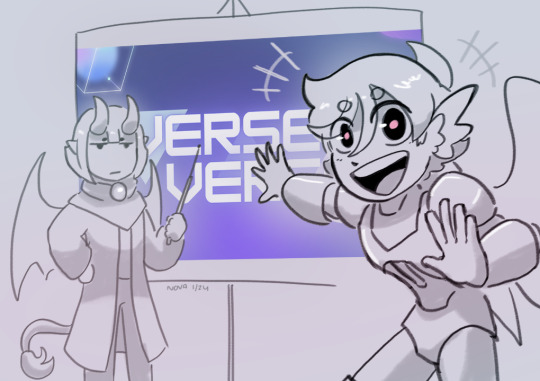
Verse Versa 101
Heyo!! I made a little slideshow that gives basic information about VV, its characters, and world! Check it out if you're interested!
#temporary pinned#verse versa#comic development#webcomic development#nova says#serif#lilac#worldbuilding#story development#angel#demon#angels#demons
424 notes
·
View notes
Text
List of Quirks
(The categorized lists are below)
What is a quirk?
Quirks are habits, attitudes, mannerisms, or behaviors that are unusual, unexpected, or strange.
People have quirks, and your characters and locations should too. Think obsessions, a silly or unusual laugh, habits like pacing around the room, knuckle cracking, or braiding or twisting hair while thinking. Someone could always be cold, even in the summer without AC. An old man could have the habit of checking his mailbox twice a day, so much so that there is a path of trampled grass leading to his mailbox.
Locations can have quirks. The front door might have to be pushed or pulled in a certain way to engage the lock. The sink faucets could be switched. The hot water tap could really be the cold water tap despite the label.
Think of somewhere you've lived or a person you knew. What stood out to you about them? What did you find bizarre, aggravating, or charming about them?
Quirks will serve as the little details that will make your characters and settings lifelike. These quirks will say a lot about what you are describing, and they can even be used to allude to something important in your plot. There could be significant explanations to the quirks you choose which can add a layer of depth to your story.
Personality Quirks:
Thorough planner
Never plans for anything
Lone wolf
Needs approval
Adventurous
High strung
Takes things seriously
Skeptical of everything
Loves to argue
Avoids people
Avoids touching people
Honest to a fault
Impulsive liar
The Martyr
Sensitive
Abrasive
Compulsive flirt
Ambitious but lazy
Behavioral Quirks:
Picks at nails
Smokes only certain brands
Drinks a homemade concoction of choice
Tops their food with a specific dressing or additional ingredient
Loud laugh
Subdued laugh
Whistles or hums when walking
Always misses the trash can
Touches their face when they talk
Gets a stomachache at tense moments
Stutters when talking to someone attractive
If they clean is always a deep clean
Avoids public restrooms
Collection of ducks
Collections in general
Very loud sneezes
Kitten sneezes
Hisses when thinking
Always sounds angry even when they aren't
Has a hard time articulating feelings or desires
Often gets cliches or common phrases wrong
Physical Quirks:
Twitchy eye
Twitchy foot
Extremely flexible
Extremely inflexible
Two colored eyes
Chipped nails
Long perfect nails
Distinctive weight distribution
Very short
Very tall
Distinctive marks like birth marks or scars
Clothes/accessories:
Wears new clothes but has an old beaten-up suitcase or bag
Fingers full of rings
Never seen without makeup
Never wears their hair down
Cracked glasses
Socks never match
Old people sweaters
One sock pulled up, the other falling down
Half tucked shirt
Always a pen in the shirt pocket
Wears only a specific color
Crooked pins or name tag
Wears anything with their favorite animal
Wears slippers out in public
Location Quirks:
Squeaky steps
Window that jams
Lot full of old trees
A popular place of business with limited, inconvenient hours
House locks that are hard to open
A front door without weather stripping
Plumbing that rattles when water runs
Whistling windows
Creaky couch
Wavy, uneven floors
Always windy
A yard where critters are always seen
A public place that seems to attract certain people or animals
Always spotless
#writers of tumblr#writeblr#writing advice#writing community#writing tips#writing help#character development#Setting#locations#character traits#character personalities#quirks#character quirks#personalities#traits#list of traits#list of personalities#list of quirks#clothing#world building#writeblur#story development#plot development#plot#story#writing resource#EmilyWrites185
73 notes
·
View notes
Text
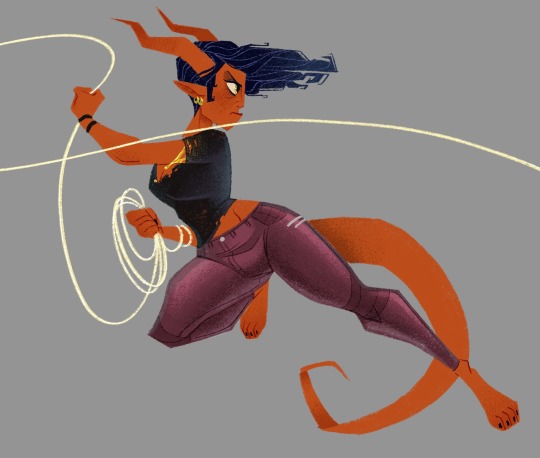
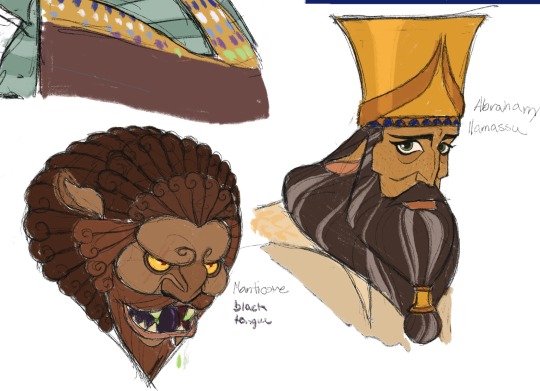


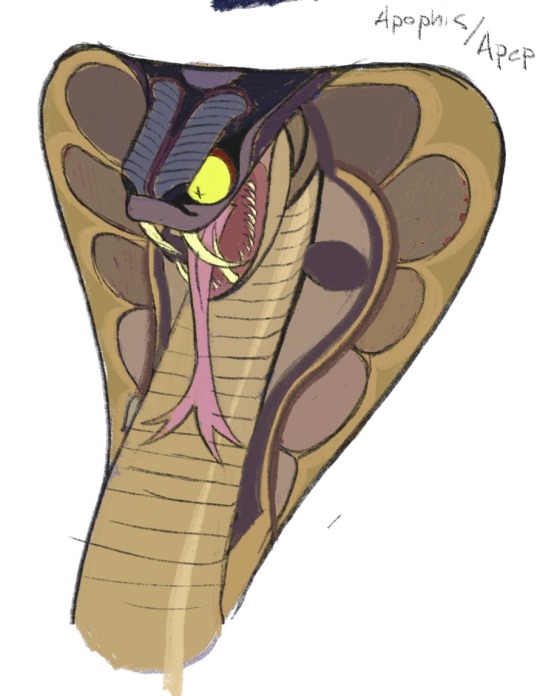

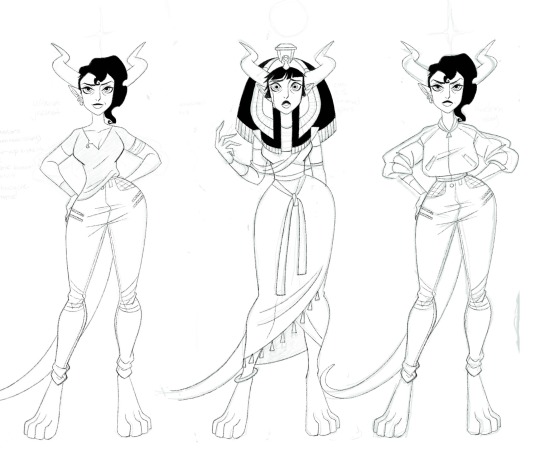
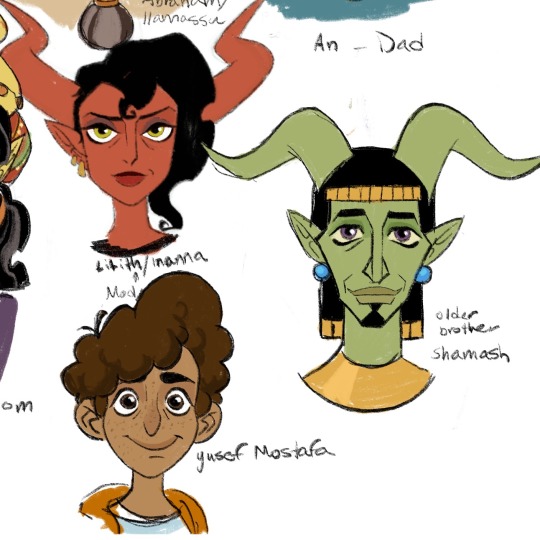
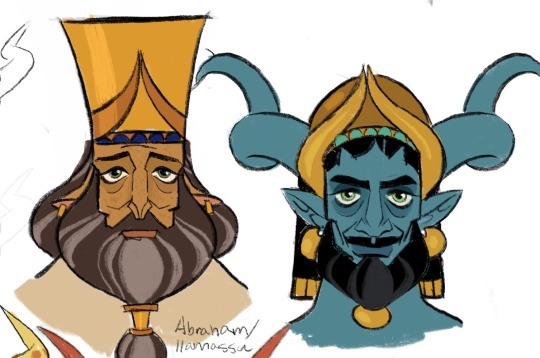
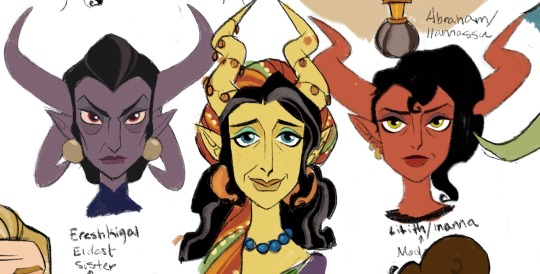
I want to get into the habit of sharing more of my visual development art for my novel — most of it is rough or unfinished, but that’s kind of fun right?
Anywho, my nearly complete cast of characters and a lot of the recent design work I’ve done for them!
#oc’s#my ocs#original art#novel writing#story development#concept art#animation#art#character design#drawing
219 notes
·
View notes
Note
How much of the remaining 4 books do you have planned out? I'm curious to know considering you've mentioned it's 7 books in total and it seems so massive and lore filled. Absolutely love this series!
All the books have a general plan to them- like what the story is going to be, what point I want the romances to be at, etc.
I find having that whole overarching story plot in place, as well as the individual stories, makes it a bit more cohesive. Each book is supposed to be like an episode in a TV show, and the seven books together make the whole season...if that makes sense, hehe! :D
But very detailed plans I do when I come to write the book, as things have definitely changed and adapted as I've written the books!
Thank you so much for the ask! :)
#the wayhaven chronicles#asks#interactive fiction#game mechanics#story development#series development#story arc#writing#personal#twc book 4#the wayhaven chronicles book 4
205 notes
·
View notes
Text
How I write action/fight scenes
From a prompt posted by a friend on Discord last night. :3 Just thought I would ramble a bit before getting to work, this morning. If you're a writer and want to know what goes through my head as I come up with combat scenes in my stories, then read on. In this way, I hope we both learn a lot. Because I honestly don't think I've ever laid out my "formula" before...
First, know who you're dealing with.
This tutorial is going to stick mostly to the actual writing aspects, but if you're going to do an action series, you should factor in the combat abilities of your characters as you develop them. This doesn't have to be anything fancy. Keep it to the natural human responses at least. In other words, during a conflict, how will your character react:
Fight: Push back
Flight: Run away
Freeze: Do nothing
Knowing just that will give you enough to start thinking these dances through. And indeed, that's what they are - a dance. If you know more, like, specifically what kind of fighting they do, what their strengths in combat are, etc -- all the better, but know that what I list below goes in order from most to least important, and that stuff won't be on the list until the end.
Second, (and always) make the audience care about the action.
This sounds dumb and counterintuitive but people won't find an action scene compelling just because it's an action scene. Not to knock it, because it was brilliant for a different reason and a lot of the writing staff's hands were tied... BUT... During my time as a fan of, all the way into my employment with, Archie-Sonic, I can't tell you how many action scenes happened just because some executive at Sega was like "I think X and Y need to fight." So they would, and for reasons that were muddy at best. I think at one point, we had Sonic and Knuckles literally exchanging this dialogue:
Sonic: Yo dude, be cool. Last time we met, we left on good terms! Knuckles: Maybe, but you're still an intruder and just because you did me that favor on the day my daughter was to be married does not mean I owe you anything in the way of kindness.
IDK, my memory may be foggy, but that was the gist of it. Point is, don't do that - and first make sure your audience understands the motives behind the action, the potential stakes, and why it's all taking place to begin with. Else, you can make it as cool as you want and people are going to walk away with a sense of "that was cool" instead of "holy shit I was freaking out through that whole scene." If there's any question as to what you should be striving for as a writer, it's the latter.
Third, plot it out like it's a mini-story.
To the point - figure out the end first, and work backwards, just like so many writing tutorials have said before. Again, keep it simple: Who wins? Does the conflict result in a casualty of some kind? Does a character learn something?
Before you show how it goes down, you need to establish what goes down as the action happens, and what happens afterwards. Keeping the ending in mind as yo write a scene is always a good way of making it feel tighter. And throwing littlte twists for interest (maybe a character has the upper-hand for all but the end of the fight - maybe a character is losing until a specific turning point, etc) is made much easier, too.
Fourth, mind the rhythm.
A little weird to explain this, but the back-and-forth nature of the scene needs to flow well. Generally, conflict follows a pattern of:
Character acts
Opposition reacts
Opposition acts
Character reacts
If this pattern looks familiar to you, it should. This is the basic pattern of human dialogue as seen in stories and, YES, real life. Consider your scene like a dialogue all its own (even if the characters are talking throughout). The twists and turns I spoke about in the last point should be "off beat" because there's an unexpected nature to them. When a twist happens, consider breaking the above pattern.
Fifth, showcase character traits and skills (again, always).
Some characters have a high sense of honor and would put down their weapons if their opponent was unarmed. Some of them would fight dirty and hit someone with a chair when their back was turned. Some characters are scrappy and will jump into a conflict even when they're sorely outmatched. Some are straight up cowards who might run away even when there's a good chance they could win. Some are smart enough to bow out and will not engage -- hiding at the first sign of trouble. Some will throw snowballs at the oppressor and be surprised when they pull aggro and the dude comes after them.
You get the idea -- fights, conflicts and action scenes are great ways to show your characters' strengths, weaknesses, traits, and personality. Times of struggle are going to lay emotional responses raw, and it's a great way of showing "who someone really is" as it were.
Sixth, showcase unique defensive behavior.
Some characters have specific training: military, martial arts, street-fighting, etc... which, if you're aware of those, should come out during combat or conflict. Some characters have access to weapons. Some characters' bodies are the weapon. Etc, etc etc...
Whatever you do, about the only time you're going to show off the fact that your character knows Muay Thai is during an action scene. If you yourself do not practice this martial art, then research what you need to incorporate to make it believable when you write. Watch videos and write down the ways you would describe the movement. If you're doing a comic, then sketch the movement. Use that in your story.
Last, create more interest by tying in and highlighting story themes or disparities between protagonist characters, antagonist characters, and/or the conflict as a whole.
A little trickier, but if your story has a central theme or moral, try showing pieces of it shining through the action. Just as one wild example, if you have a theme of "love conquers all" this might mean your fight will end with the two people falling in love, instead of fighting. Think like a dungeon master. If you rolled a natural 20 on "try to woo the orc" in a combat situation (remember that comic?) what do you think would happen?
Too, if your combatants have something in common, or especially something that they are diametrically opposed on, feel free to show that off in these scenes. It'll leave the audience knowing them better (and set them up for further head-butting... or romance(?) down the line. And that's always fun).
Anywho, that's just a few of my thoughts on action sequences in fiction. If this helped you, or you want me to talk about this even more -- send me a message or a note or something. Always up for discussing this kind of thing.
And your reward for reading this far is an invite to join my discord if you wanna hear me ramble on about this sort of thing, in perpetuity. :)
#creative writing#writing tips#tutorials#action scenes#writing action scenes#writing combat#character development#story development
100 notes
·
View notes
Text
OC Questions/Prompts
If your OC has enhancements, or magical powers, how dependent are they on them?
1a. How do their enhancements or powers affect their day to day life? Are there any downsides to them that makes it harder to do certain things?
2. Your OC is watching the trolley problem play out directly in front of them, how do they react?
3. If your OCs moral compass was flipped for a day, what would happen, and what would they be like?
3a. What long-term consequences or regrets would stem from their actions?
4. Write a description of your OC from the perspective of another/several other OCs.
5. What rumours about your OC proceed them? Are they true/false/half-truths? Who started them?
6. How would your OC react if people falsely thought they had died?
7. If your OC was forced to have an animal companion, what would they pick?
7a. Would they grow to like their new pet, and if so how long would it take for them to warm up to it?
8. What skill or hobby would your OC despise learning?
9. How does your OCs behaviour change when they're placed in a professional environment?
#OC questions#OC prompts#writing#story development#oc asks#oc ask game#character asks#character prompts
51 notes
·
View notes
Text

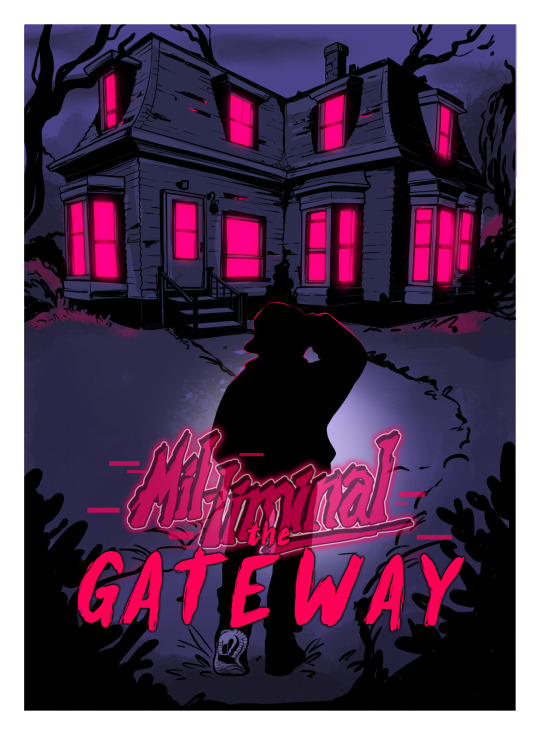
Leaving this here so you can speculate about Mil-Liminal part 2: The Gateway, cuz it’s time for me to start getting into that after a years break from part 1. Are you ready?
Me either 🖤
#milliminal#original characters#comics#wips#story development#the in between#liminal space#ghost stories
64 notes
·
View notes
Text
Still considering, but I'm thinking of designing my own versions of the Greek God's. Taking inspiration from The Odyssey, a little bit from Epic, and other thinks I could find. I'll probably put my own spin on them, but we'll see.
20 notes
·
View notes
Text
Tip for Comic Artists+Writers
(If you don't do this already!)
Draw in ballpoint pen. In a notebook.
If you're like me and you struggle to plan your script in a word processor, or you struggle to "storyboard" or even sketch in a digital art program for your comic...
Don't do that part! At least, not yet anyway!
Scribble and sketch and doodle your characters, and their lines of dialogue, wherever you want on a piece of notebook paper, with a ballpoint ink pen. You can try and figure out the comic panel configuration of a page if you want to do that, but otherwise I recommend you don't do any panel-planning yet... in order to not limit yourself to a single page in the story. Draw the first and last scene in the same page, or only draw the witty one lines you had in your head that made you want to make this comic!
The benefit: there's no pressure to get it perfect!
Don't like how you drew the hands? Well scribble it out, or ignore it; it's not the final draft by any means. You're just getting the idea on paper so you can visualize it! It's the best way to practice what emotions you're trying to convey, or the positions of the characters, without worrying about if it's "good" or not. It gives you the freedom to make mistakes, so you aren't paralyzed by the possibility of making those mistakes and the trouble of having to edit them.
You can use a sketchbook or a pencil, but for me, this defeats the purpose of letting myself experiment and make mistakes with the art/dialogue. You get visual representation of what you want to work on (scribbled out hands tells me, "be sure to practice hands and gestures!"; Stricken out dialogue lines tells me, "yep that's not how I want him to say it. Maybe I should practice a few different variations of that line?")
Their faces can look wonky, their word bubbles can be poorly placed, and the dialogue can be absolute "cringe"... and guess what? It doesn't matter because first of all, it's hilarious what you can come up with when you let loose, but second and most importantly, you're getting your ideas down in writing and on paper!!!
--additional note: it gives you so much for you to reference from as well. I recommend letting the notebook be your central spot for experiments, concepts, story ideas, notes, reminders, and important details for your story/comic/graphic novel so it becomes a personal reference guide for you (and maybe somewhat of an encyclopaedia?) :)
I hope this is helpful - it has been for me!
#i had this posted privately but never shared it#but guess what it works SO WELL for me!!#so i'm sharing this for anyone who may benefit from it!#this totally helps me overcome writers/art block#it's just about foolproof!#my post#hope this works for somebody else!#graphic novel#comic tips#writing tips#comic development#comics#art tips#creative#comic writing#story development#comic writer#comic artist#graphic novelist#graphic novel tips
53 notes
·
View notes
Text

Conceptual art of a Mountain Grazer || The Mountain Grazers raise cattle (see cow sketches below the cut), herding them from grassy mountainside to grassy mountainside by season. Sometimes they have to climb to get vantage points, clear pathways (the cows are not as graceful), and rescue calves that have been separated. They’re so strong that most of them can pull off feats like the one shown here: scaling an over-sheer cliff side with a calf dangling from one foot. Incredibly hearty and athletic, these fellas are the most no-nonsense of the Grazer species.
#original story#species design#original art#character design#procreate art#art#digital art#artists of tumblr#rustic space doodles#shepherd#fantasy art#fantasy story#character dev#story development#worldbuilding
100 notes
·
View notes
Text
Ah, the usual "the only one who can truly empathize/care about the WoL" because "X has value to the Scions outside of combat (cuz that's all they like WoL for)" as if flanderizing/crapping on/mischaracterizing/refusing to acknowledge the growth of the rest of the characters is doing any better than poor takes on one's own fave, and stops me from taking seriously the rest of one's analysis about the nuances of their character development through the story.
IMO, if you still think the Scions (and a lot of other characters) only care about the WoL as a murder machine and take their champion for granted post-Banquet disaster, then you haven't been paying attention - especially in ShB and EW and major parts of those stories' themes - to anyone but your own faves, and your analysis is flawed due to a refusal to examine those biases/other perspectives, and give old characters (including some antagonists and other secondary figures who continue to grow) and updated story a chance.
(Also welcome to the flaws in video game storytelling, where the Blank Slate POV character is primarily only allowed to participate in combat scenarios and other immediate, active forms of player input/engagement, and a lot of story is maybe summarized in quick dialogue as it was offscreen and out of said Blank Slate POV character's perception)
#final fantasy xiv#grumpy old lady hours#opinion#characters#storyarcs#character development#story development#Scions of the Seventh Dawn
27 notes
·
View notes
Text

More Jack & Jill development 🪣
#fairy tale#art#digital#fanart#doodle#sketch#drawing#oc#my art#environment art#concept art#character development#story development
156 notes
·
View notes
Text
After a long night of writing, I am finally finished the scripts for the first three chapters/episodes of my Misfits in Toyland comic! Here are their titles:
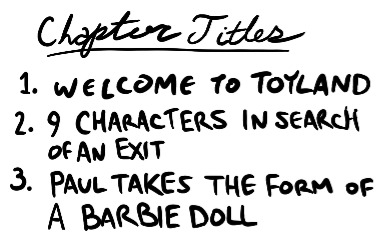
Bonus points if you catch all the references. Now I just gotta, you know, draw it. ✍️
If you like what I do and want to support my project, please consider supporting me over on Patreon:
58 notes
·
View notes